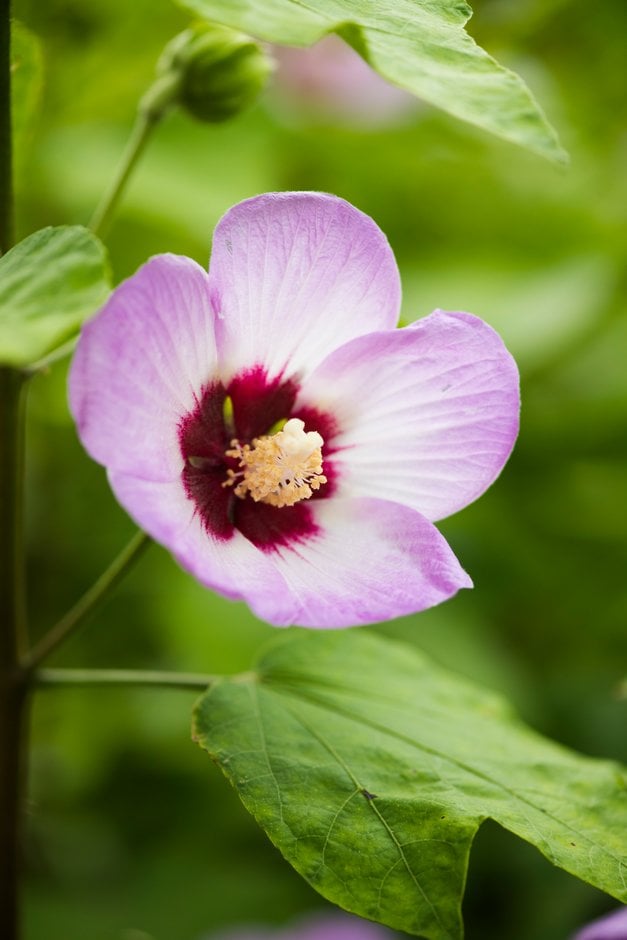Hibiscus sinosyriacus 'Lilac Queen'
Chinese rose of Sharon 'Lilac Queen'
A spreading, open shrub up to 2.5m high, with deciduous, broadly ovate, shallowly three-lobed, mid-green leaves, to 10cm long, and trumpet-shaped flowers, 8-9cm across, of pale lilac-pink petals with dark red centres and cream anthers, from late summer to mid-autumn

Buy this plant
Size
Ultimate height
1.5–2.5 metresTime to ultimate height
5–10 yearsUltimate spread
1.5–2.5 metresGrowing conditions
Moisture
Moist but well–drainedpH
Acid, NeutralColour & scent
| Stem | Flower | Foliage | Fruit | |
| Spring | Green | |||
|---|---|---|---|---|
| Summer | Red Cream Purple | Green | ||
| Autumn | Red Cream Purple | Green | ||
| Winter |
Position
- Full sun
Aspect
West–facing or South–facing
Exposure
Sheltered Hardiness
H5Botanical details
- Family
- Malvaceae
- Native to GB / Ireland
- No
- Foliage
- Deciduous
- Habit
- Bushy
- Genus
Hibiscus can be deciduous or evergreen shrubs, trees, annuals or perennials, with simple or palmately lobed leaves and large, funnel-shaped flowers over a long flowering season
- Name status
Accepted
How to grow
Cultivation
May be grown outdoors in mild, frost-free areas, or in large containers that can be moved indoors over winter. Outdoors, grow in neutral to slightly acidic soil in full sun, and mulch well over winter. Hibiscus need long, hot summers to flower well. Indoors, grow in bright filtered light with moderate humidity and good ventilation
Propagation
Propagate by softwood cuttings in late spring, by semi-ripe cuttings in summer, or by layering in spring or autumn
Suggested planting locations and garden types
- City and courtyard gardens
- Cottage and informal garden
- Low Maintenance
- Wall side borders
- Flower borders and beds
Pruning
Pruning group 1 (little or no pruning of trees and shrubs)
Pests
May be susceptible to aphids, scale insects, mealybugs and glasshouse whitefly when grown under glass
Diseases
May be susceptible to honey fungus (rarely) and powdery mildews
Get involved
The Royal Horticultural Society is the UK’s leading gardening charity. We aim to enrich everyone’s life through plants, and make the UK a greener and more beautiful place.